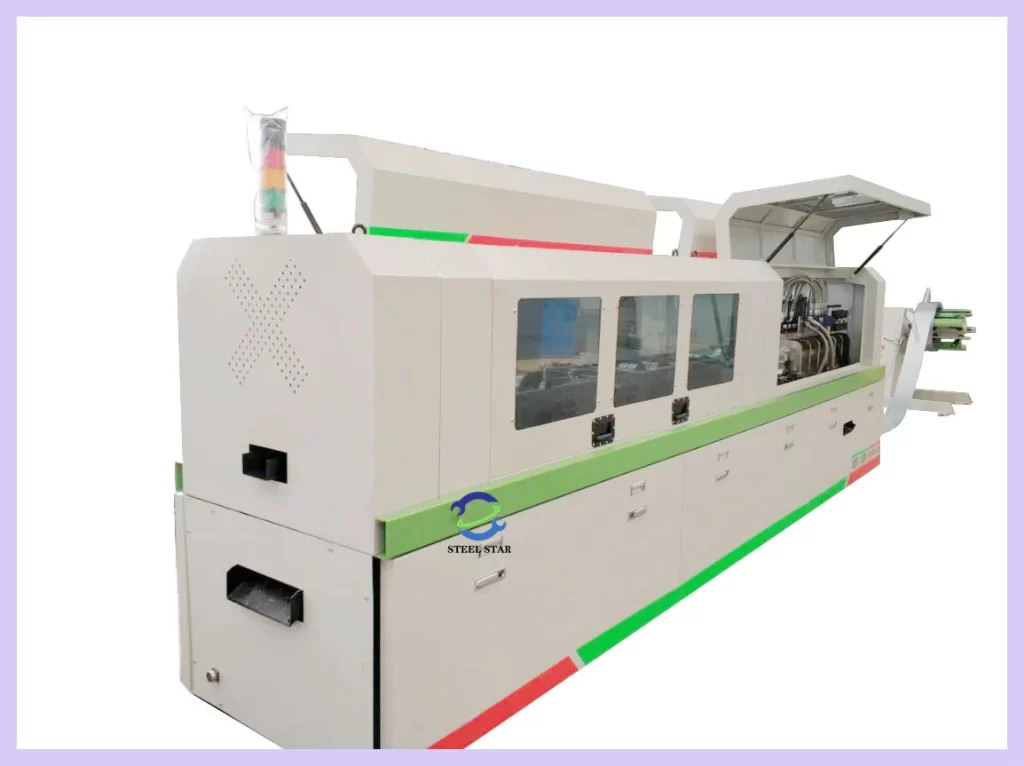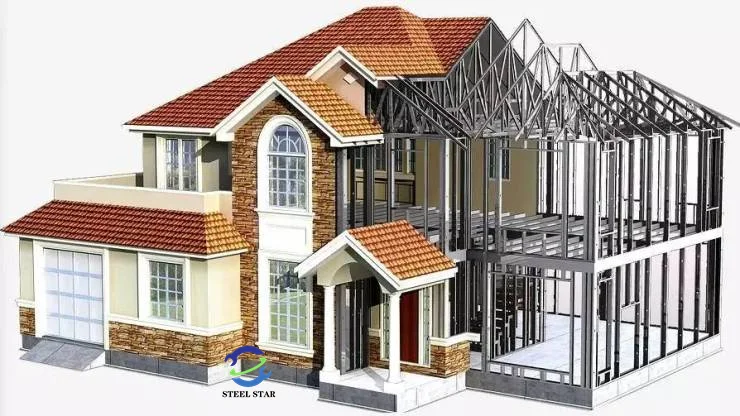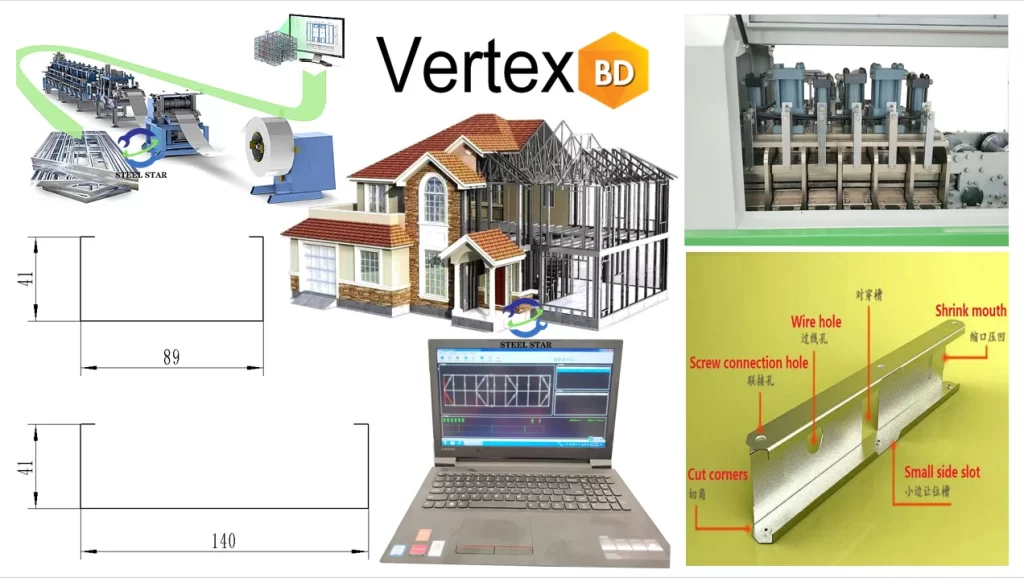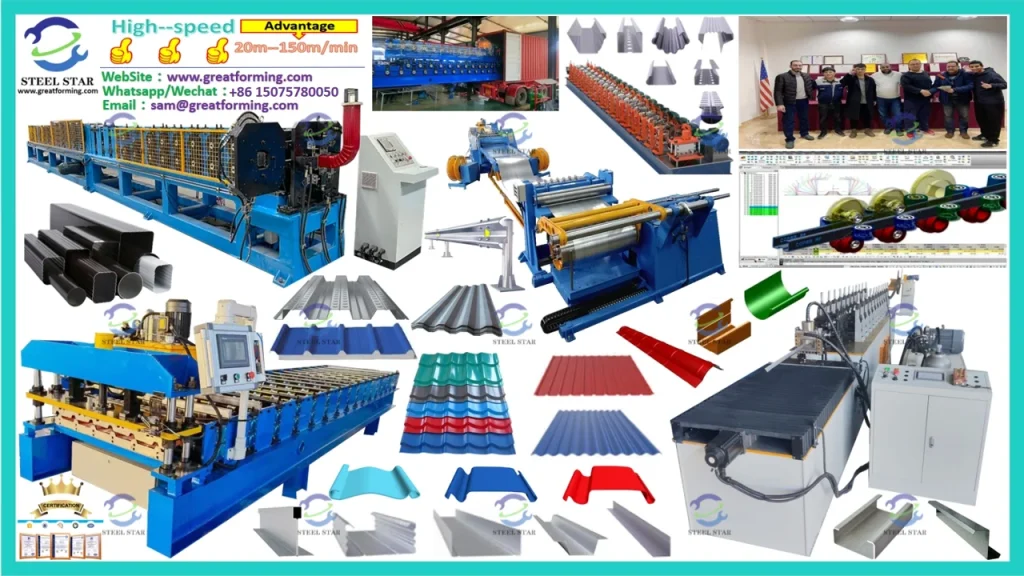Steel Framing and Steel Framing Machines: Revolutionizing Construction
Introduction
Steel framing and steel framing machines have transformed the construction industry, offering a modern, efficient, and sustainable alternative to traditional building methods. Steel framing involves using cold-formed steel (CFS) components to create structural frameworks for buildings, while steel framing machines automate the production of these components. Together, they provide strength, durability, and precision, making them ideal for residential, commercial, and industrial projects.
1. What is Steel Framing?
Steel framing refers to the use of lightweight steel sections, such as studs, tracks, and joists, to construct building frameworks. Unlike wood framing, steel framing is non-combustible, pest-resistant, and highly durable. It is widely used in modern construction due to its versatility and ability to meet stringent building codes.
Key Advantages of Steel Framing:
- Strength and Durability: Steel is stronger than wood, allowing for longer spans and fewer supports.
- Fire Resistance: Steel is non-combustible, enhancing building safety.
- Pest Resistance: Steel is immune to termites and other pests.
- Sustainability: Steel is recyclable, reducing environmental impact.
- Design Flexibility: Steel allows for innovative architectural designs.

2. Steel Framing Machines: The Backbone of Production
Steel framing machines are specialized equipment designed to manufacture steel framing components from steel coils. These machines automate processes like cutting, punching, and roll forming, ensuring precision and consistency in production.
Types of Steel Framing Machines:
- Roll Forming Machines: Shape steel coils into studs, tracks, and joists.
- Punching and Notching Machines: Create holes and slots for connections.
- Cutting Machines: Cut steel components to precise lengths.
- Automated Systems: Combine multiple functions for high efficiency.
Benefits of Steel Framing Machines:
- Increased Efficiency: Automation reduces labor and production time.
- Precision: Ensures consistent quality and accuracy.
- Customization: Allows for tailored components to meet specific design needs.
- Reduced Waste: Minimizes material waste, promoting sustainability.
3. Applications of Steel Framing
Steel framing is used in various construction projects, including:
- Residential Buildings: Homes, apartments, and townhouses.
- Commercial Structures: Offices, retail spaces, and hotels.
- Industrial Facilities: Warehouses and factories.
- Institutional Buildings: Schools, hospitals, and government buildings.

4. Impact on Modern Construction
4.1 Faster Construction
Steel framing components are prefabricated off-site, reducing on-site assembly time and speeding up project completion.
4.2 Improved Quality
Steel framing machines produce precise components, ensuring structural integrity and reducing errors.
4.3 Cost-Effectiveness
While initial costs may be higher, steel framing offers long-term savings through durability and low maintenance.
4.4 Sustainability
Steel framing supports green building practices by using recyclable materials and reducing waste.
4.5 Design Innovation
Steel framing enables architects to create complex and innovative designs, such as open floor plans and large windows.
5. Challenges and Solutions
5.1 Initial Investment
The cost of steel framing machines can be high, but the long-term benefits outweigh the initial expense.
5.2 Skilled Labor
Training is required to operate steel framing machines and assemble steel-framed structures.
5.3 Thermal Bridging
Steel conducts heat, which can affect energy efficiency. Proper insulation and thermal breaks are essential.
5.4 Corrosion
Steel can corrode in humid or coastal environments. Protective coatings and maintenance are necessary.

6. Future Trends
6.1 Advanced Automation
Integration of AI and machine learning will optimize production and reduce downtime.
6.2 Prefabrication and Modular Construction
Steel framing is ideal for prefabricated and modular building methods, which are gaining popularity.
6.3 Sustainable Materials
Eco-friendly coatings and treatments will enhance steel’s durability and environmental performance.
6.4 Smart Building Integration
Steel framing will be integrated with IoT and smart technologies to create energy-efficient, intelligent buildings.
Conclusion
Steel framing and steel framing machines have revolutionized the construction industry, offering a durable, efficient, and sustainable alternative to traditional methods. As technology advances, these innovations will continue to shape the future of construction, enabling faster, safer, and more innovative building solutions.
Website:
www.greatforming.com (English)
www.arabicgreatforming.com (عربي)
www.russiangreatforming.com(Русский)
www.spanishgreatforming.com(Español)
www.frenchgreatforming.com(Français)
www.portuguesegreatforming.com(Portuguese)

